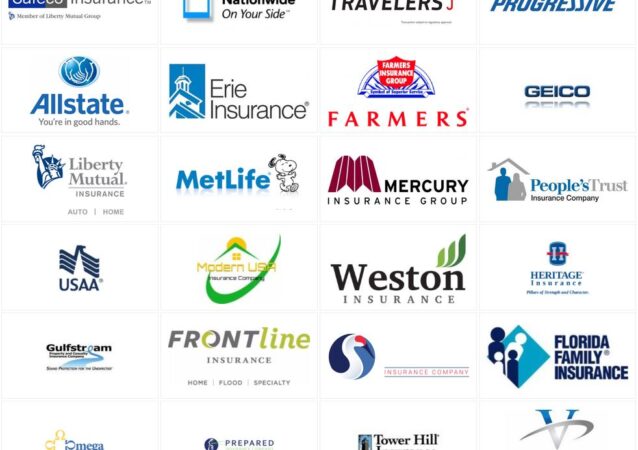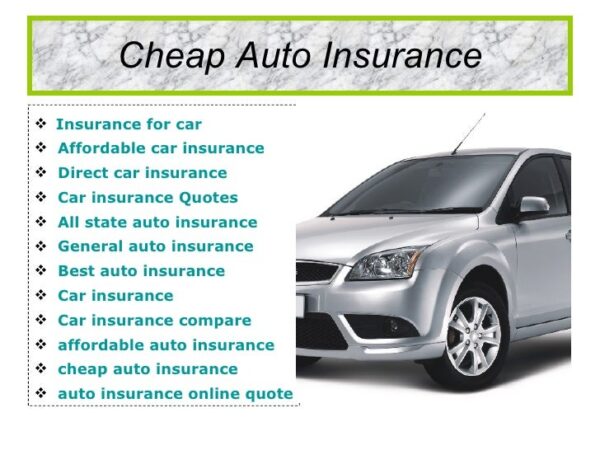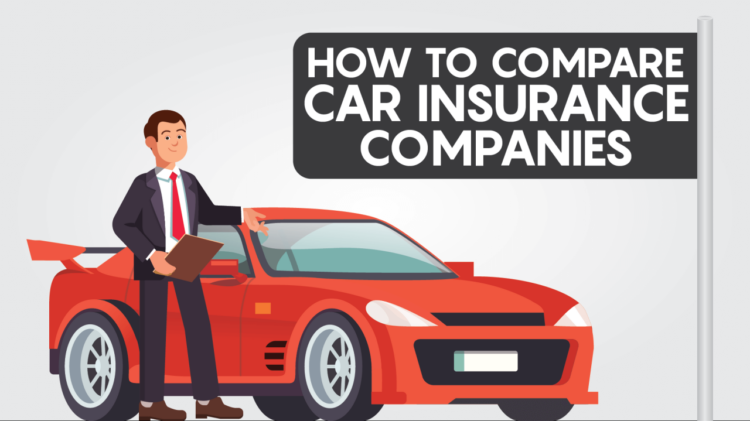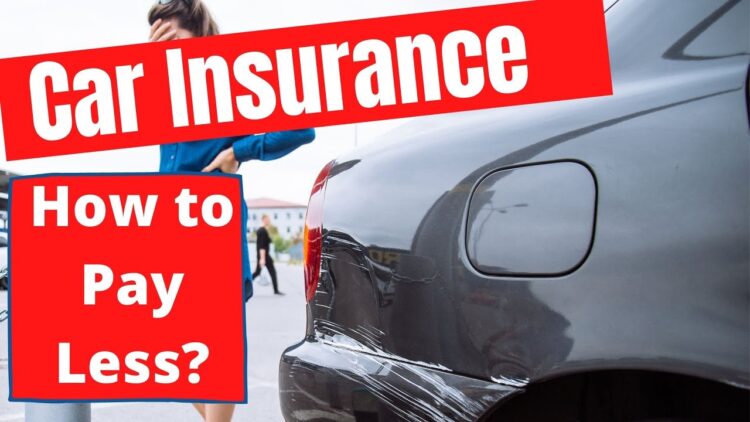
When does an insurance company total a vehicle – When does an insurance company total your car? It’s a question that can cross your mind after a serious accident, leaving you wondering about the fate of your vehicle. Totaling a car isn’t just about the cost of repairs; it’s a complex process that involves a variety of factors. Insurance companies consider the damage, the vehicle’s age and condition, market value, and even the availability of replacement parts to determine if a car is totaled. This decision impacts both your financial well-being and your ability to get back on the road.
This guide will dive into the factors insurance companies consider when deciding to total a vehicle, explain the process of total loss assessment, and highlight the implications for you as the policyholder.
Determining Total Loss

When your car gets into an accident, you might be wondering if it’s a total loss. This means the damage is so severe that it’s cheaper for the insurance company to declare the car a total loss and pay you for its value rather than repair it.
Factors Contributing to a Total Loss
Several factors can contribute to a vehicle being declared a total loss. These factors are usually considered in combination with one another.
- Cost of Repairs: If the cost of repairs exceeds the actual cash value (ACV) of the vehicle, it’s likely to be totaled.
- Safety Concerns: If the damage compromises the structural integrity of the vehicle, making it unsafe to drive, it might be totaled.
- Age and Condition: Older vehicles with high mileage and pre-existing damage are more likely to be totaled due to the lower ACV.
- Availability of Parts: If critical parts are unavailable or difficult to obtain, the repair costs can skyrocket, leading to a total loss declaration.
Examples of Total Loss Situations
Here are some examples of situations where a vehicle might be totaled:
- Severe Front-End Collision: A head-on collision causing extensive damage to the engine, frame, and front suspension.
- Rollover Accident: A rollover accident can result in significant structural damage, affecting the vehicle’s safety and repairability.
- Flood Damage: If a vehicle is submerged in water, the damage to the electrical system and engine can be extensive and costly to repair.
- Fire Damage: A fire can cause severe damage to the interior, engine, and electrical system, making the vehicle a total loss.
Methods for Assessing Total Loss
Insurance companies use various methods to assess total loss:
- Actual Cash Value (ACV): The ACV is the fair market value of the vehicle before the accident. This is typically calculated using market data, such as Kelley Blue Book or Edmunds.
- Repair Cost Estimates: Insurance companies will obtain estimates from qualified repair shops to determine the cost of repairs.
- Salvage Value: The salvage value is the estimated amount the insurance company can recover by selling the damaged vehicle.
- Total Loss Formula: Insurance companies often use a formula that compares the repair cost to the ACV to determine if the vehicle is a total loss.
Total Loss Formula: If (Repair Cost + Salvage Value) > ACV, then the vehicle is likely totaled.
Factors Beyond Repair Costs

It’s not always just about the repair bill. While the cost of fixing a damaged vehicle is a major factor in determining a total loss, other factors come into play, especially when the car is older or has a unique history.
Vehicle Age and Condition, When does an insurance company total a vehicle
The age and condition of a vehicle play a significant role in determining a total loss. Older vehicles, especially those with high mileage, are more likely to be totaled because the cost of repairs may exceed the vehicle’s market value. Insurance companies consider the vehicle’s overall condition, including wear and tear, maintenance history, and any pre-existing damage.
Market Value and Availability of Replacement Parts
The market value of a vehicle is crucial in determining a total loss. If the cost of repairs exceeds the vehicle’s market value, it may be more cost-effective for the insurance company to declare the vehicle a total loss and pay out the market value rather than invest in expensive repairs. The availability of replacement parts also plays a role. If parts are rare or difficult to obtain, the cost of repairs could skyrocket, making a total loss more likely.
Factors Leading to Total Loss
Several factors can lead to a vehicle being totaled even if repair costs are below the threshold:
- Salvage Value: If the vehicle’s salvage value is low, the insurance company may deem it a total loss, even if repairs are possible. Salvage value is the amount the insurance company can get by selling the damaged vehicle for parts or scrap.
- Safety Concerns: If the vehicle has sustained structural damage that compromises its safety, it may be totaled, even if the repairs are technically possible. This is especially true for vehicles involved in severe accidents.
- Environmental Regulations: In some cases, environmental regulations may dictate that a vehicle be totaled even if repairs are possible. For example, if a vehicle has been involved in a spill of hazardous materials, it may need to be disposed of properly, regardless of repair costs.
The Total Loss Process: When Does An Insurance Company Total A Vehicle
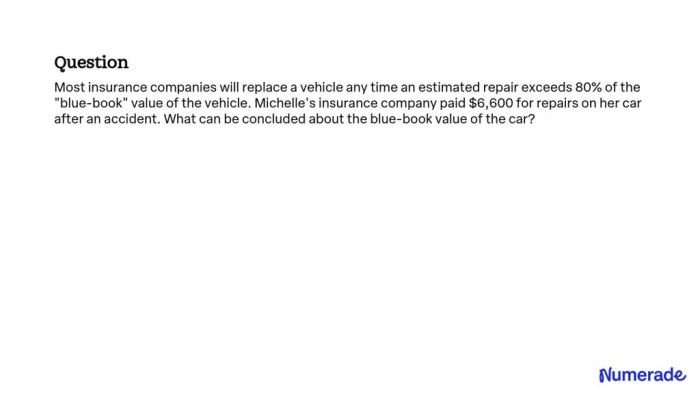
So, your car’s been in an accident, and it’s looking pretty rough. You’re wondering if your insurance company is going to declare it a total loss. If the damage is too extensive to repair, your insurance company might decide to total your car. But how does this process work? Let’s dive in.
Total Loss Assessment Process
After you report the accident to your insurance company, they will initiate the process of assessing the damage to your vehicle. This typically involves a few key steps:
- Initial Inspection: An insurance adjuster will inspect the vehicle to assess the extent of the damage. This inspection helps determine if the cost of repairs exceeds the vehicle’s actual cash value (ACV). The ACV is essentially the market value of your car before the accident, taking into account factors like its age, mileage, and condition.
- Repair Estimates: The adjuster will obtain repair estimates from qualified repair shops. These estimates will factor in the cost of parts and labor.
- Total Loss Determination: The insurance company will compare the repair estimates to the vehicle’s ACV. If the cost of repairs is greater than the ACV, the vehicle is typically declared a total loss.
Communication with the Policyholder
Throughout the total loss assessment process, the insurance company will keep you informed of their findings and decisions. They will typically communicate with you through:
- Phone Calls: To discuss the details of the accident and the assessment process.
- Emails: To provide updates on the status of the claim and any documentation related to the total loss determination.
- Letters: To provide formal notifications and explanations regarding the total loss declaration and your options.
Policyholder Options After a Total Loss
Once your vehicle is declared a total loss, you’ll have some options:
- Receive the ACV Payment: This is the most common option. You’ll receive a payment from the insurance company for the ACV of your vehicle, minus any deductible you may have. You can then use this money to purchase a new or used vehicle.
- Keep the Totaled Vehicle: In some cases, you may be able to keep the totaled vehicle, but you’ll have to pay the insurance company the difference between the ACV and the repair cost. This option might be attractive if you want to salvage parts from the vehicle or have a particular sentimental attachment to it.
- Negotiate with the Insurance Company: If you believe the ACV is too low, you can try to negotiate with the insurance company for a higher settlement. You might be able to provide evidence of the vehicle’s fair market value, such as recent appraisals or comparable vehicle listings.
Flow Chart of the Total Loss Process
Here’s a simple flowchart illustrating the steps involved in a total loss determination:
[Image of a flowchart showing the steps involved in the total loss process. The flowchart should include the following steps:
* Accident Occurs
* Policyholder Reports the Accident
* Insurance Company Assigns an Adjuster
* Adjuster Inspects the Vehicle
* Adjuster Obtains Repair Estimates
* Adjuster Determines the ACV
* Insurance Company Compares Repair Costs to ACV
* Vehicle is Declared a Total Loss
* Insurance Company Notifies Policyholder
* Policyholder Receives ACV Payment or Keeps the Vehicle
* Policyholder Purchases a New or Used Vehicle]
Impact on the Policyholder
A total loss declaration can be a stressful and financially challenging experience for a policyholder. Understanding the financial implications, the process of receiving compensation, and the potential impact on future insurance premiums is crucial for navigating this situation effectively.
Financial Implications
A total loss means the insurance company will pay out the actual cash value (ACV) of your vehicle, which is its market value before the accident, minus depreciation. This means you’ll receive less than what you originally paid for the vehicle, even if you had comprehensive or collision coverage. For example, if you bought your car for $20,000 three years ago and its ACV is now $15,000, you’ll receive $15,000 from the insurance company.
Receiving Compensation
After reporting the accident to your insurance company, they will assess the damage and determine if it’s a total loss. If declared a total loss, you’ll need to provide them with the vehicle’s title and any other relevant documents. The insurance company will then issue you a check for the ACV of your vehicle, minus any applicable deductibles.
Negotiating a Fair Settlement
While the insurance company’s initial offer might be based on their own valuation, you can negotiate for a higher settlement if you have supporting documentation. This could include:
- Recent appraisals or valuations of your vehicle.
- Receipts for recent repairs or upgrades.
- Evidence of comparable vehicles selling for higher prices in your area.
Be prepared to provide evidence and be assertive but respectful during negotiations.
Impact on Premiums
While a total loss claim won’t directly increase your insurance premiums, it might impact your driving record. Depending on your insurance company and the circumstances of the accident, you might see an increase in your premiums in the future. This is because insurance companies assess risk based on driving history, and a total loss claim might be seen as an indication of higher risk.
Concluding Remarks
Navigating the world of car insurance and total loss claims can be overwhelming. Understanding the factors involved in a total loss determination empowers you to advocate for your interests and navigate this process with confidence. By knowing your rights and the key considerations, you can ensure you receive a fair settlement and a smooth transition back on the road. Remember, the insurance company is there to help you through this challenging time, but it’s essential to be informed and prepared.
FAQ Resource
What if my car is deemed totaled, but I want to keep it?
You may have the option to purchase the totaled vehicle from the insurance company at its salvage value. However, you’ll need to factor in the cost of repairs and the potential risks associated with driving a salvaged vehicle.
How does a total loss affect my insurance premiums?
A total loss can impact your future insurance premiums, as it’s considered a claim. Your insurance company will likely review your driving history and the circumstances of the accident to determine any potential premium adjustments.
Can I dispute a total loss determination?
Yes, you can dispute a total loss determination if you believe it’s unfair. You’ll need to provide evidence to support your claim, such as independent repair estimates or documentation of the vehicle’s market value.


